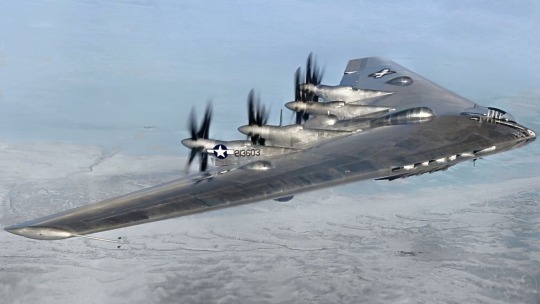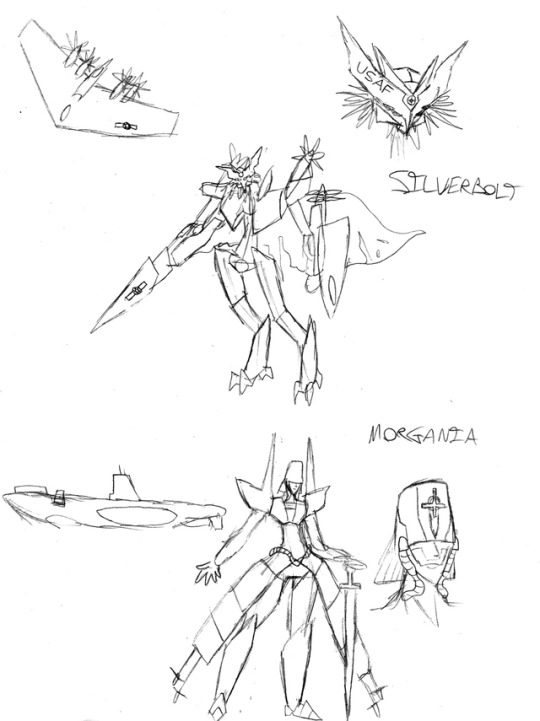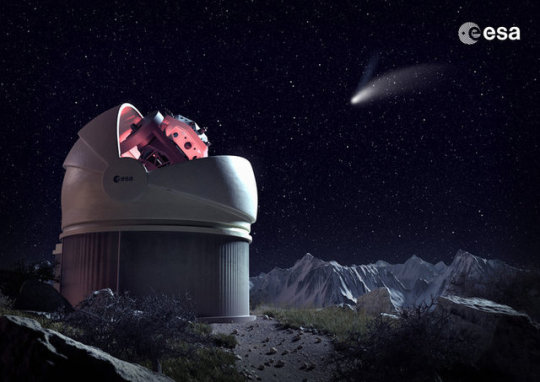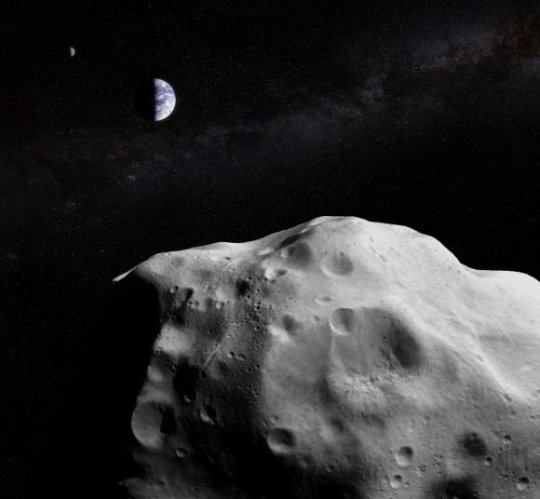#yb35
Text

#Northrop XB-35 42-13603 in flight with early contra-rotating propellers
➤➤ NORTHROP'S FLYING WING - VIDEO: https://dronescapes.video/Northrop
#youtube#aircraft#airplane#aviation#dronescapes#military#documentary#aviation history#northrop#Jack Northrop#flying wing#colorized#aviation pioneer#aviation photography#aviation industry#B-35#YB35#YB-35
160 notes
·
View notes
Photo

Just some rough sketches of characters that were kind of in The Last Knight
6 notes
·
View notes
Text
Wees gerust: planetoïde 2006 QV89 zal de aarde op 9 september 2019 niet raken!
Wees gerust: planetoïde 2006 QV89 zal de aarde op 9 september 2019 niet raken!
Nee, dit moet een heel andere planetoïde voorstellen, YB35, die op 27 maart 2014 langs de aarde vloog. Het is een artistieke weergave, want de aarde is erin gephotoshopt. Nee wat zeg ik, dit is niet eens YB35 die je ziet, maar de planetoïde Lutetia. De ESA moet dit maar eens uitleggen, ik heb ‘t niet verzonnen.
De laatste tijd was planetoïde 2006 QV89 in het nieuws, want er was een kleine, doch…
View On WordPress
0 notes
Text
Wees gerust: planetoïde 2006 QV89 zal de aarde op 9 september 2019 niet raken!
Wees gerust: planetoïde 2006 QV89 zal de aarde op 9 september 2019 niet raken!
Nee, dit moet een heel andere planetoïde voorstellen, YB35, die op 27 maart 2014 langs de aarde vloog. Het is een artistieke weergave, want de aarde is erin gephotoshopt. Nee wat zeg ik, dit is niet eens YB35 die je ziet, maar de planetoïde Lutetia. De ESA moet dit maar eens uitleggen, ik heb ‘t niet verzonnen.
De laatste tijd was planetoïde 2006 QV89 in het nieuws, want er was een kleine, doch…
View On WordPress
0 notes
Text
10 астероидов, способных привести к концу света
Примерно раз в 80 тысяч лет на нашу землю падает метеорит диаметром около 300 метров. Малые астероиды атакуют Землю регулярно, но все они сгорают в плотных слоях атмосферы. Тем не менее крупные метеориты уже падали на нашу планету и, к сожалению, упадут снова. Это лишь вопрос времени. Доказательств тому достаточно и все они лежат на поверхности нашей планеты в виде огромных кратеров и окаменелостей живых организмов, которых застала катастрофа. Но сегодня астрономы способны обнаруживать достаточно большие объекты, приближающиеся к земле. Давайте посмотрим потенциально опасные для нас астероиды, а также те, что уже атаковали нас тысячи лет назад.
1. Комета Хиякутаке.
Эта комета прошла очень близко от Земли в 1996 году. Комета прошла настолько близко, что была видна невооруженным глазом. И это было удивительно красиво, но и опасно. Она имела колоссальный размер – 4,1 км в диаметре и имела очень длинный хвост. Комета прошла на расстоянии 15,2 млн. км от Земли. Это большое расстояние, но в астрономических масштабах оно ничтожно мало.
2. 2000 FL 10 / Астероид 86666.
Этот астероид прошел в 24.1 миллионах километров от земли. Его ширина составила 2,4 км и при столкновении с Землей он привел бы к глобальному катаклизму, если бы что-то изменило его орбиту.
3. 2014-YB35.
Астероид 2014-YB35 размером с небольшую гору и в 2015 году он прошел всего в 6,4 миллионах км. от Земли. Хуже всего то, что астероид движется по круговой орбите, а это значит, что он еще вернется и пройдет на еще более близком расстоянии. Второе ожидаемое сближение произойдет в 2033 году.
4. 1950 DA.
Этот астероид имел все шансы врезаться в Землю. Его диаметр равен 1 км, а шанс попадания в Землю – 2%! Астероид возможно вернется в 2880 году.
5. Апофис.
Этот астероид был назван в честь древнеегипетского мифологического демона и ученые-астрономы всерьез опасаются, что этот демон приведет к концу нашей цивилизации. Апофис приблизился к Земле в 2004 году. Следующее сближение произойдет в 2029 году и если астероид пройдет через, так называемую, гравитационным замочную скважину, то в 2036 году он гарантировано поразит Землю.
6. Бенну.
Еще один астероид, способный уничтожить нас всех. НАСА планируются миссии по уточнению положения астероида и отклонению его траектории полёта в сторону от Земли.
7. Маникуаган.
Этот массивный кратер является напоминанием о том, что угроза падения астероидов реальна. Маникуаган образовался 215 миллионов лет назад от удара 5 километрового астероида.
8. Вудлей.
Существует некоторая дискуссия по поводу того, насколько большой кратер Вудлей на самом деле. Некоторые говорят, что кратер, расположенный в Австралии, имеет всего 60 км в ширину. Но другие говорят, что это только центр кратера, а его реальный размер в два раза больше. Считается, что более 40% жизни на Земле исчезло во время падения астероида, образовавшего этот кратер.
9. Чесапикский ударный кратер.
Метеорит, образовавший этот кратер, ударил в Землю 35 миллионов лет назад на побережье Атлантического океана.
10. Вредефорт.
Кратер Вредефорт в Южной Африке является крупнейшим ударным кратером на Земле. Он имеет 300 км в диаметре и его создал один из самых больших метеоритов, когда-либо столкнувшихся с Землей. Столкновение произошло 2 миллиарда лет назад и оно имело огромное влияние на все живое на Земле.
источник
Если вам понравился пост, пожалуйста, поделитесь ими со своими друзьями! :)
from CTRL.info http://ctrl.info/2018/06/26/10-%d0%b0%d1%81%d1%82%d0%b5%d1%80%d0%be%d0%b8%d0%b4%d0%be%d0%b2-%d1%81%d0%bf%d0%be%d1%81%d0%be%d0%b1%d0%bd%d1%8b%d1%85-%d0%bf%d1%80%d0%b8%d0%b2%d0%b5%d1%81%d1%82%d0%b8-%d0%ba-%d0%ba%d0%be%d0%bd%d1%86/
0 notes
Photo



ESA marks #Asteroid Day ESA is developing an automated telescope for nightly sky surveys. This telescope is the first in a future network that would completely scan the sky and automatically identify possible new near-Earth objects, or NEOs, for follow up and later checking by human researchers. The United Nations has declared 30 June to be International Asteroid Day, and ESA is joining other space agencies, astronauts, scientists and even rock stars for a 24-hour global telethon. To mark this year’s Asteroid Day, ESA will take part in a unique, round-the-clock telethon that will be broadcast worldwide from Luxembourg, as well as live on the internet, highlighting the threat from asteroids and other ‘near-Earth objects’ that pose an impact risk. In December 2016, the United Nations proclaimed the last day in June as International Asteroid Day to raise public awareness about asteroid impact hazards. This date, 30 June, marks the anniversary of the largest-ever, in modern times, atmospheric entry of a meteoroid (thought to be a comet or small asteroid), which exploded over the Tunguska region of Siberia in 1908. With an estimated size of over 40 m, it devastated an uninhabited area the size of a major metropolitan city. Detritus in our Solar System such as asteroids and other near-Earth objects – basically, anything whose orbit brings it close to Earth – impact Earth every day. Most of them are little more than small particles of dust and they burn up harmlessly in the atmosphere (have you ever seen a shooting star?). However, larger ones, such as Tunguska – or the 20 m diameter object that exploded high over Chelyabinsk, Russia, on 15 February 2013, with 20–30 times the energy of the Hiroshima atomic bomb – can threaten human health and property. “When Tunguska occurred 109 years ago, humanity was not ready to predict such events,” says Rüdiger Jehn, Co-Manager for NEO activities in ESA’s Space Situational Awareness (SSA) programme. While the search, orbit determination, prediction and confirmation of threatening NEOs comprise part of the SSA programme, ESA also sees asteroids as rich sources for science: remnants of the dawn of our Solar System. The Agency’s first asteroid flyby was performed a hundred years on from the Tunguska airburst when comet-chaser Rosetta imaged asteroid Šteins in 2008, followed by a flypast of asteroid Lutetia two years later. The Agency has been planning future asteroid missions – most recently with the Asteroid Impact Mission, which has been revised into a smaller asteroid scouting mission and is now under study. On 30 June, speakers from ESA will join astrophysicists, astronomers and asteroid experts, including British physicist Prof. Brian Cox, French ESA astronaut and former Head of the European Astronaut Centre Michel Tognini, and specialists at a number of research centres as well as NASA and JAXA, in a 24-hour, live and pre-recorded telethon from Luxembourg starting at 03:00 CEST (full speaker details via the Asteroid Day website). In the Luxembourg studio, Ian Carnelli, manager of ESA's General Studies Programme who is investigating asteroid mission concepts, will join an expert panel, while a full 90-minute segment of the day-long telethon will be produced from ESA’s ESOC mission control centre in Darmstadt, Germany. In the ESOC segment, 10:30-12:00 CEST, ESA’s NEO experts will host a series of presentations in front of a live audience, including ‘Armageddon the movie: separating fact from fiction’, followed by discussions on the need for timely and accurate NEO information. Watch the 24-hour Asteroid Day webcast live via https://asteroidday.org/live on 30 June, starting at 03:00 CEST. In Twitter, follow the #AsteroidDay hashtag, or access the Asteroid Day Facebook page. TOP IMAGE....As part of the global effort to hunt out risky celestial objects such as asteroids and comets, ESA is developing an automated telescope for nightly sky surveys. This telescope is the first in a future network that would completely scan the sky and automatically identify possible new near-Earth objects, or NEOs, for follow up and later checking by human researchers. The telescope, nicknamed ‘fly-eye’, splits the image into 16 smaller subimages to expand the field of view, similar to the technique exploited by a fly’s compound eye. Such fly-eyed survey telescopes provide a very large field of view: 6.7° x 6.7° or about 45 square degrees. 6.7° is about 13 times the diameter of the Moon as seen from the Earth (roughly 0.5 degrees). In the telescope, a single mirror of 1 m equivalent aperture collects the light from the entire 6.7° x 6.7° field of view and feeds a pyramid-shaped beam splitter with 16 facets. The complete field of view is then imaged by 16 separate cameras that contain 16 detectors. The tubes contain a set of secondary lenses. In mid-2014, ESA signed a contract for about €1 million with a consortium led by CGS S.p.A (Italy), comprising Creotech Instruments S.A. (Poland), SC EnviroScopY SRL (Romania) and Pro Optica S.A. (Romania) for the detailed design of the advanced telescope. The first fly-eye telescope is expected to begin operating around 2018. Copyright ESA/A. Baker, CC BY-SA 3.0 IGO CENTRE IMAGE....Amateur picture of the Chelyabinsk asteroid, an approximately 20-metre Near-Earth Object, that entered Earth's atmosphere over Russia on 15 February 2013. The asteroid exploded before touching the ground, generating a bright, hot explosion with a gas cloud, as well as a large shock wave. Former Apollo astronaut Rusty Schweickart describes the experience in this Asteroid Day blog post. Copyright Asteroid Day Blog LOWER IMAGE....Asteroid YB35 safely flew by Earth on 27 March 2014, and was spotted by NASA and observed by the Goldstone Observatory on 20 March 2015. On this day, the asteroid was expected to be in a optimal position so that the observatory could obtain coarse radar images. These measurements helped determine the asteroid's composition. Asteroid YB35 will orbit again near Earth in 2033. This image is an artistic composite, created using images of asteroid Lutetia from ESA, and other images from NASA and ESO. Copyright J. Major
#space#science#Astronomy#astrophysics#asteroids#NEO near Earth objects#physics#planetary science#ESA
4 notes
·
View notes